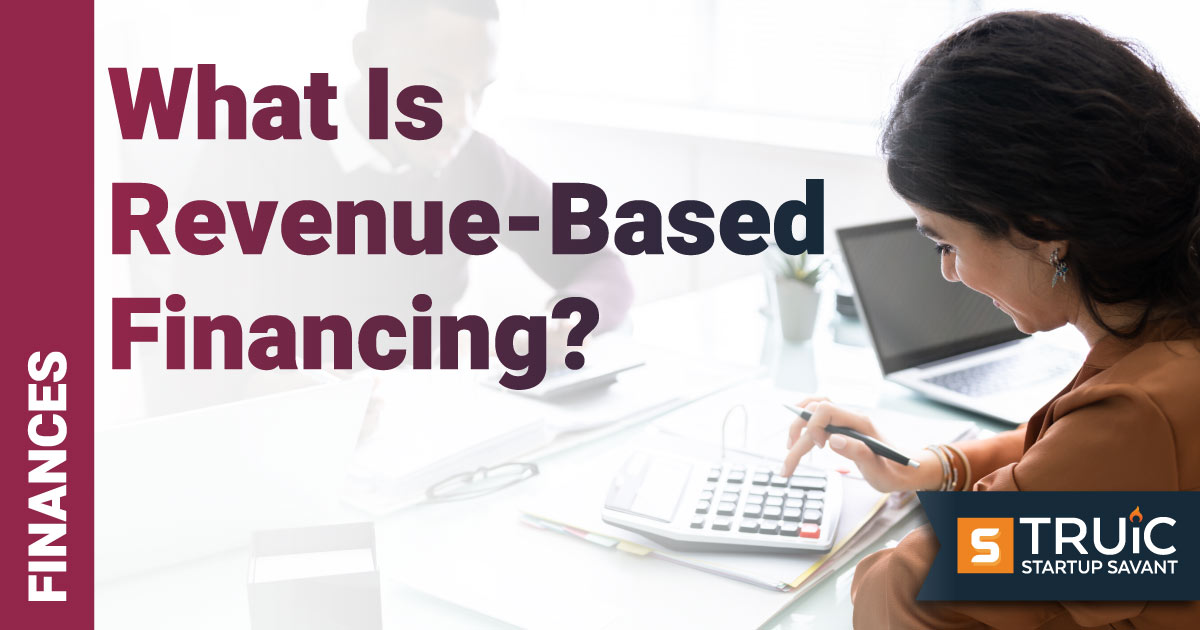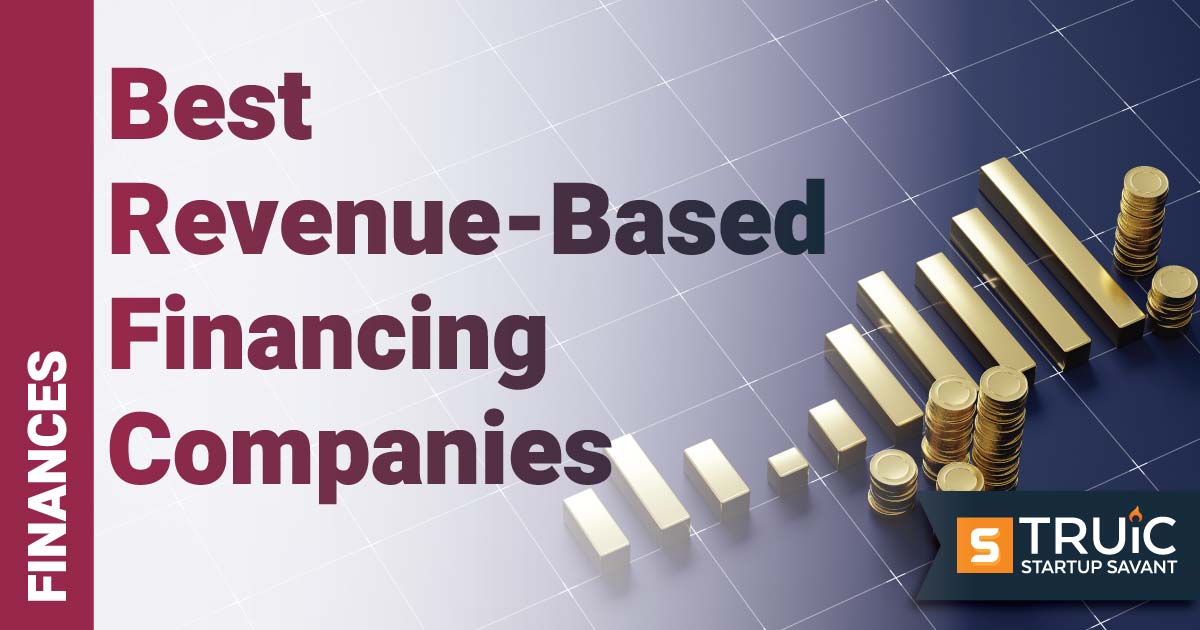What Is Revenue-Based Financing?

Last Updated: By TRUiC Team
Startups have many ways to raise capital. Revenue-based financing — also known as royalty-based financing — is a funding option that relies on future revenue to secure and repay funding for a business. Revenue-based financing isn’t for everyone, however. This guide covers what you need to know about how revenue-based financing works so you can decide if it’s a fit for your startup.
Recommended: Check out our list of the best revenue-based financing companies.
What Is Revenue-Based Financing for Startups?
Revenue-based financing is a type of business funding that enables a business to repay an investor's initial investment through a percentage of its ongoing monthly revenue until the borrowed amount is repaid.
Unlike debt financing or equity financing, there are no fixed monthly payments. Instead, the amount paid will flex each month based on the amount of revenue the business generates. As such, the length of the loan repayment will largely depend on how well the business does.
Businesses that take on revenue-based financing are commonly unable to secure investment from other sources, making it a strong funding alternative.
Best Revenue-Based Finance Company
Capchase offers revenue-based financing for startups within 48 hours — no hidden fees.
Who Should Raise Revenue-Based Financing?
Revenue-based financing can be risky for businesses with high monthly expenses so those companies should consider other funding options. However, businesses with recurring, predictable revenue like subscription and ecommerce startups may be well suited to this funding type.
Businesses considering revenue-based funding also should have a healthy amount of runway capital remaining as well as growth strategies in place with personnel to achieve them. Moreover, they’ll typically have high revenue with low liquidity — meaning the business is making money, but can’t turn much of it into ready cash.
Additionally, startups and small businesses that struggle to secure financing from other sources may consider taking on revenue-based financing. Because this funding type doesn’t typically require using personal assets as collateral or a high personal credit score from the business owner, it’s a more accessible funding option for a wide variety of businesses.
Pros and Cons of Revenue-Based Financing
Below, you’ll find a high-level look at the advantages and disadvantages of this type of funding.
Pros
- Accessibility — It’s a funding alternative for businesses struggling to secure financing from other sources due to issues with personal credit scores, cash flow, or collateral.
- Non-Dilutive — Revenue-based funding is non-dilutive, meaning founders don’t have to give up any equity in their company.
- Flexibility — The amount paid per month is flexible because it’s a set percentage of whatever your business’s gross revenue is that month.
Cons
- Risky — The revenue-based financing model can be risky — especially if your business has substantial monthly expenses.
- Potentially Expensive — Borrowers often end up paying more than the investment amount back to the investor, depending on repayment caps.
- Requires Revenue — Early-stage companies without sustainable revenue won’t qualify for revenue-based financing.
How Does Revenue-Based Financing Work?
Once a business chooses to raise capital through revenue-based financing, the founders will connect with a revenue-based financing provider and share the necessary financial information (e.g., the company’s history and financial forecasting).
If the provider approves the startup and the amount of requested capital, two numbers need to be established: the repayment cap and the monthly revenue share.
To start, revenue-based financing providers will determine a repayment cap that can range from 0.4 to up to two times the loan amount. These caps operate similarly to interest on a loan payment. The repayment cap will vary, depending on the length of repayment as well as other factors. Generally, the longer it takes you to repay the investor, the higher the repayment cap.
Next, the investor will establish a percentage of the startup’s monthly revenue that’ll go toward repayment. This typically falls between 1% and 3%, but it can run as high as 8%. Some investors will install a timeline for loan repayment, but many don’t due to potential fluctuations in revenue.
Alternatives to Revenue-Based Financing for Startups
While revenue-based financing can provide a helpful funding option for some, it isn’t necessarily the right funding strategy for all businesses.
Equity Funding
Equity funding is a form of dilutive funding that involves raising capital from investors, such as venture capital firms or angel investors, who then take an equity stake in your company. This is the most common type of financing for startups — especially those looking for capital to rapidly scale their companies.
Often, equity funding is intertwined with series funding wherein startups will raise capital at different stages (e.g., seed, Series A, Series B, and Series C).
Business Lines of Credit
A business line of credit offers companies a flexible, revolving form of financing. Unlike equity financing, business lines of credit aren’t dilutive and, in many cases, will continuously renew as you repay your balance as well as any interest.
Lines of credit function similarly to business credit cards and provide a helpful resource for short-term cash flow.
Startup Business Loan
A startup business loan or small business loan is a form of traditional debt financing companies can obtain from several financial institutions or other types of lenders. With this type of funding, businesses simply apply for a loan amount and, if approved, solidify repayment terms (e.g., the timeline and interest rates).
To obtain a business loan from a bank or financial institution, you’ll typically need a good personal credit score or some sort of collateral.
FAQs
What is an example of revenue-based financing?
An example of revenue-based financing would be if a business borrowed $25,000 from a revenue-based financing company. To repay that borrowed amount, the business would pay the investor a fixed percentage of its ongoing revenue. This amount will fluctuate as the business’s revenue fluctuates, meaning the amount will differ from payment to payment.
What are the disadvantages of revenue-based financing?
Revenue-based financing can be risky, and it often costs more than the amount borrowed to repay. Additionally, companies must have a predictable, recurring revenue stream in order to qualify for revenue-based financing.
Is revenue-based financing a loan?
Revenue-based financing is a type of business lending that allows businesses to raise capital and repay it by offering investors a percentage of their ongoing revenue.
What are the fees for revenue-based financing?
Revenue-based financing typically only requires borrowers to repay the amount borrowed as well as a repayment cap — an additional amount on top of the borrowed amount that operates like interest.


